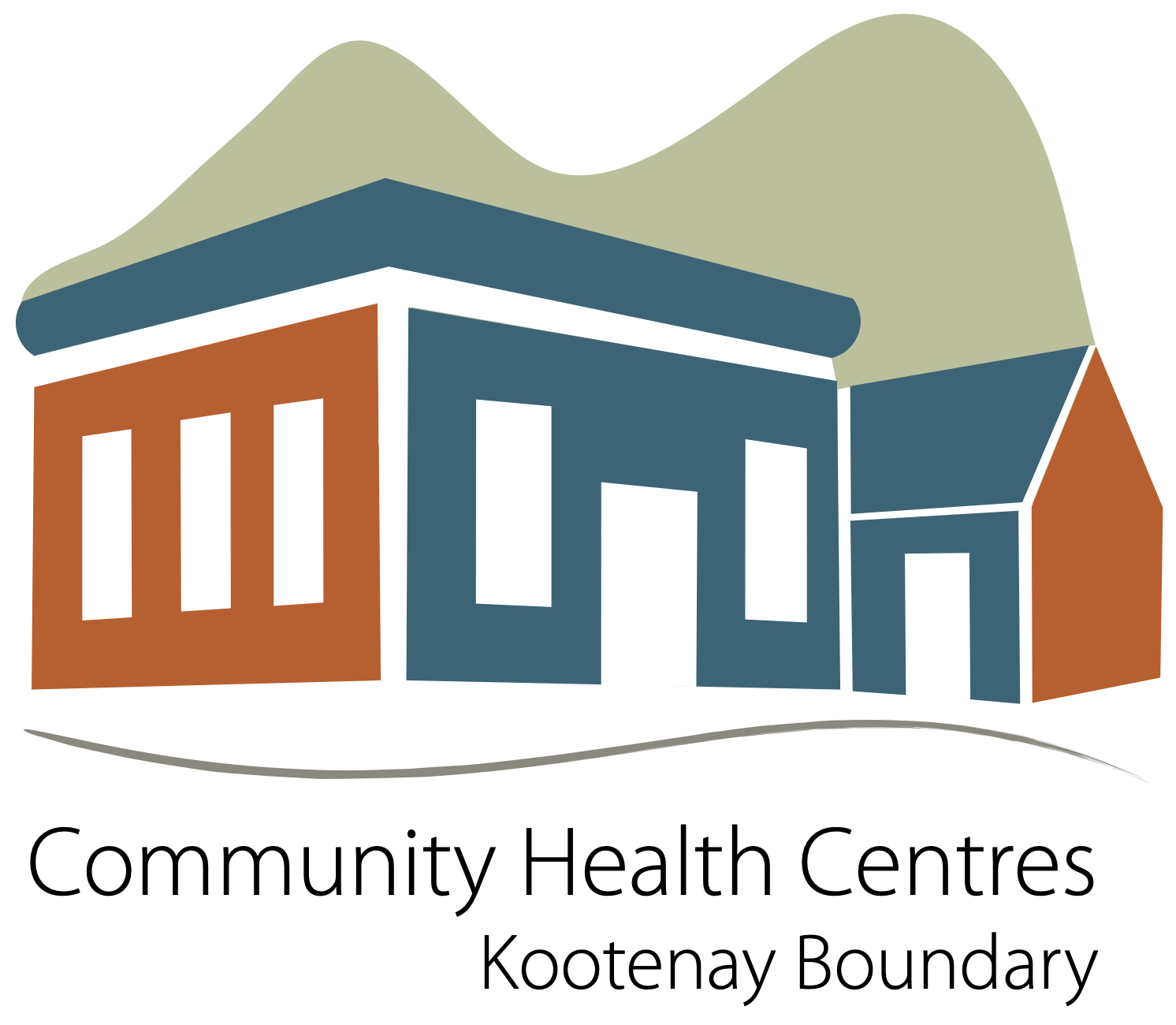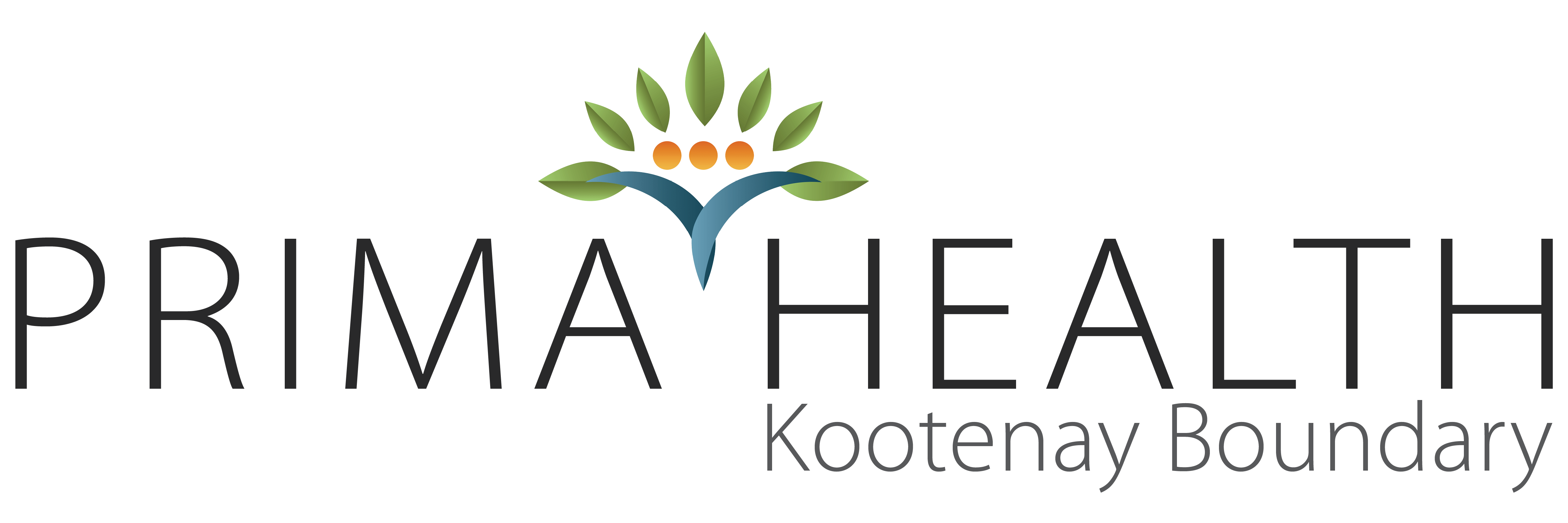Prima Health is a Kootenay Boundary based not-for-profit cooperative led by family practitioners, community partners, and patients.
Prima Health operates the KB Health Primary Care Clinic, kbscreen.ca, kbaccess.ca and Beaver Valley Medical Clinic. We also provide financial and HR management services to three Kootenay Boundary primary care clinics, and provide advocacy and leadership for the development of Primary Care Community Health Centres in Kootenay Boundary.
Questions? Contact info@primahealth.ca
About Prima Health
Prima Health provides health and wellness services within the Kootenay Boundary Region. Specifically:
- Providing management services to family physicians and related health professionals who operate or work in health clinics in the Kootenay Boundary area in order to enhance patient care in the community;
- Operating clinics in the KB health area in order to develop innovative services and service modalities that enhance patient care in the community
- Exploring and developing opportunities for innovative and collaborative approaches to primary healthcare with other stakeholders;
- Participating in the planning of improvements, research, and evaluation in relation to primary care, community and population-based health.
The Prima Health Vision
Improve Care • Optimize Efficency • Reduce Costs


![]() As chair of the Prima Board and a long-time resident of the Kootenay Boundary region, Prima is a vision I strongly believe in and am excited to be part of. It is a collaborative vision. It’s a regional vision. Overall, I think implementing the Prima Vision will increase attachment, it will make our system more efficient, it will save tax payer dollars, and most importantly, I think it has huge potential for improving quality of care for patients.
As chair of the Prima Board and a long-time resident of the Kootenay Boundary region, Prima is a vision I strongly believe in and am excited to be part of. It is a collaborative vision. It’s a regional vision. Overall, I think implementing the Prima Vision will increase attachment, it will make our system more efficient, it will save tax payer dollars, and most importantly, I think it has huge potential for improving quality of care for patients.
PRIMA CORNERSTONES

1–CAPITAL INVESTMENT
![]() A major challenge we face as practitioners is that many of our primary care teams are operating in very small clinics, restricting the necessary room for our current team members, not to mention the space needed for the new recruits and medical learners who are vital to the future of primary care in British Columbia.
A major challenge we face as practitioners is that many of our primary care teams are operating in very small clinics, restricting the necessary room for our current team members, not to mention the space needed for the new recruits and medical learners who are vital to the future of primary care in British Columbia.
By investing to expand clinic spaces, we’re not just achieving economies of scale and improving workflows; we’re making room for new physicians, nurse practitioners, and residents. Alongside this, we’re removing the burden of clinic ownership from physicians which will simplify recruitment and retirement processes, and streamline succession planning.
It’s about building a future where healthcare is not just accessible but adaptable to the needs of both our medical professionals and the communities in which we serve.

2–ENHANCED TEAM BASED CARE
![]() Enhancing team-based care is crucial for optimizing the efficiency of primary care, thereby ensuring broader access and better patient attachment. This model of care enables physicians, nurse practitioners, and other team members to work to the fullest extent of their capabilities, ensuring patients see the right provider at the right time.
Enhancing team-based care is crucial for optimizing the efficiency of primary care, thereby ensuring broader access and better patient attachment. This model of care enables physicians, nurse practitioners, and other team members to work to the fullest extent of their capabilities, ensuring patients see the right provider at the right time.
Research and literature strongly support that a ratio of 3 to 1—team members to physicians and nurse practitioners—is optimal for achieving the best outcomes in primary care efficiency and maximizing patient attachment. The Prima Vision to increase our current ratio of 1.2:1 to 1.6:1 is a significant step towards this goal, fostering a more collaborative and effective healthcare environment.

3–ONGOING OPERATIONAL INVESTMENT
![]() Clinics today are navigating tight operational margins, with a significant portion of our budgets dedicated to staffing … a challenge compounded by high turnover rates. The responsibility of managing a clinic, which includes not just patient care but also hiring, budgeting, operations, and tech, predominantly falls on our physicians. Which of course means less time caring for patients and higher risk of burnout.
Clinics today are navigating tight operational margins, with a significant portion of our budgets dedicated to staffing … a challenge compounded by high turnover rates. The responsibility of managing a clinic, which includes not just patient care but also hiring, budgeting, operations, and tech, predominantly falls on our physicians. Which of course means less time caring for patients and higher risk of burnout.
Over the years, many physicians have enhanced patient care through additional privately funded supports like labs, nurses, and office management, but often physicians do not have sufficient funding to maintain these supports at a high enough wage, and these valuable staff members leave and seek opportunities elsewhere.
By providing clinics with more operational support, including increasing PCN team overhead funding from 15% to 25% and providing a small amount of additional funding, clinics could significantly increase operational efficiency and maintain a stable and skilled workforce. And with this support, physicians would be able to redirect their focus almost entirely to their patients, increasing capacity, access and quality of care.

4–COMMUNITY PARTICIPATION
![]() Community involvement in governance and investment is critical to Prima’s Vision. Sustainable primary care is critical for resident well being, economic growth, and population growth – and community members have a major stake in the success of primary care clinics.
Community involvement in governance and investment is critical to Prima’s Vision. Sustainable primary care is critical for resident well being, economic growth, and population growth – and community members have a major stake in the success of primary care clinics.
Engaged citizens can and do contribute in many ways to the success and the operation of our clinics. Communities may be involved in financial investments and ownership of assets, as well as maintenance and improvement of clinic buildings, political advocacy and community engagement.
All this leads to primary care providers feeling valued, supported, and eager to stay in the communities where they live, work and play.

5–NETWORKED CLINICS
![]() For practitioners, the networked approach means more opportunities for learning, mentorship, and coverage. It transforms the way teams work together, fostering a community of shared knowledge and support.
For practitioners, the networked approach means more opportunities for learning, mentorship, and coverage. It transforms the way teams work together, fostering a community of shared knowledge and support.
Administrative staff, including managers and MOAs, benefit from the network too. They’re no longer isolated, enjoying access to broader learning opportunities and the ability to quickly share innovations.
A single backbone organization will bring economies of scale, pooled expertise, and unified supports like HR, operations, and quality improvement. This streamlined approach ensures that our primary care system is not only more connected but also more efficient and responsive to the needs of our communities.

6–A REGIONAL APPROACH
![]() Finally, it’s crucial that any model adopted for BC must provide both rural and urban solutions. The fact is that rural areas are often home to the most unattached and underserved populations in BC’s healthcare system.
Finally, it’s crucial that any model adopted for BC must provide both rural and urban solutions. The fact is that rural areas are often home to the most unattached and underserved populations in BC’s healthcare system.
So it’s essential that funding is provided for enhanced team-based care and infrastructure right across the province. Because here’s the thing: when we only focus on improving healthcare infrastructure in certain areas, we’re not just overlooking communities; we’re actively making the choice to increase inequities, which leads to communities being pitted one against the other … when the need for collaboration is greater than ever.
The bottom line is that we need a commitment to improve primary care for everyone. That means finding solutions that work in all contexts, rural and urban, as well as addressing the needs of disadvantaged and marginalized populations. It’s about moving forward together, working collaboratively to meet the primary care needs of every British Columbian.
Prima Health Initiatives

KB Health is a primary care clinic that provides healthcare to complex patients in the Kootenay Boundary Region who do not have a Family Doctor or Nurse Practitioner, stabilizing them until they can be attached to a longitudinal provider.

KB Screen is a virtual service offering age-related routine screening for residents of Kootenay Boundary who don’t currently have a primary care provider. We offer screening for breast, cervical, colon, lung and prostate cancer.

KB Access is a medical clinic that offers episodic primary care, as needed & by appointment only, to patients in the Kootenay Boundary region who don’t currently have a family doctor or nurse practitioner.
Prima Health Management Services
Prima Health provides Clinic Management Services to independent private physician clinics wishing to receive more support in managing the business side of running their primary care clinic.
Prima Health:
- relieves physicians of the administrative burdens of running a practice through development and provision of a professional Clinic Manager;
- engages in the practice of continuous administrative improvement, implementing systems and structures to improve efficiency;
- supports team-based care; and
- facilitates engagement with community to build stronger connection between the clinic and local primary care needs.

Prima Health is working with the Riverside Medical Clinic in Trail BC

Incubation of Community Health Centres and Community-Led Clinics
While private fee for service physician owned will continue to play a foundational role in the delivery of Primary Care for the forseeable future, other clinic models need to be expanded to meet patient and practitioner needs for a mix of longitudinal Primary Care clinics in Kootenay Boundary.
The number of physicians and nurse practitioners focused on Primary Care in Canada has fallen well behind the growth in patient service needs. In Kootenay Boundary, this is exacerbated by a large number of longitudinal providers nearing retirement, with insufficient recruits available to fully replace them.
These challenges are sparking communities to act. Citizens and providers in many communities are exploring the option of addressing gaps through development of Community Health Centres and Community-Led Clinics, where GPs and NPs work side by side with robust teams of Nursing and Allied providers, caring for more patients that Practitioners can care for on their own. Prima Health is working in alignment with these groups, undertaking Feasibility and Business Planning for a Network model of clinics, which would serve the entire Kootenay Boundary.
